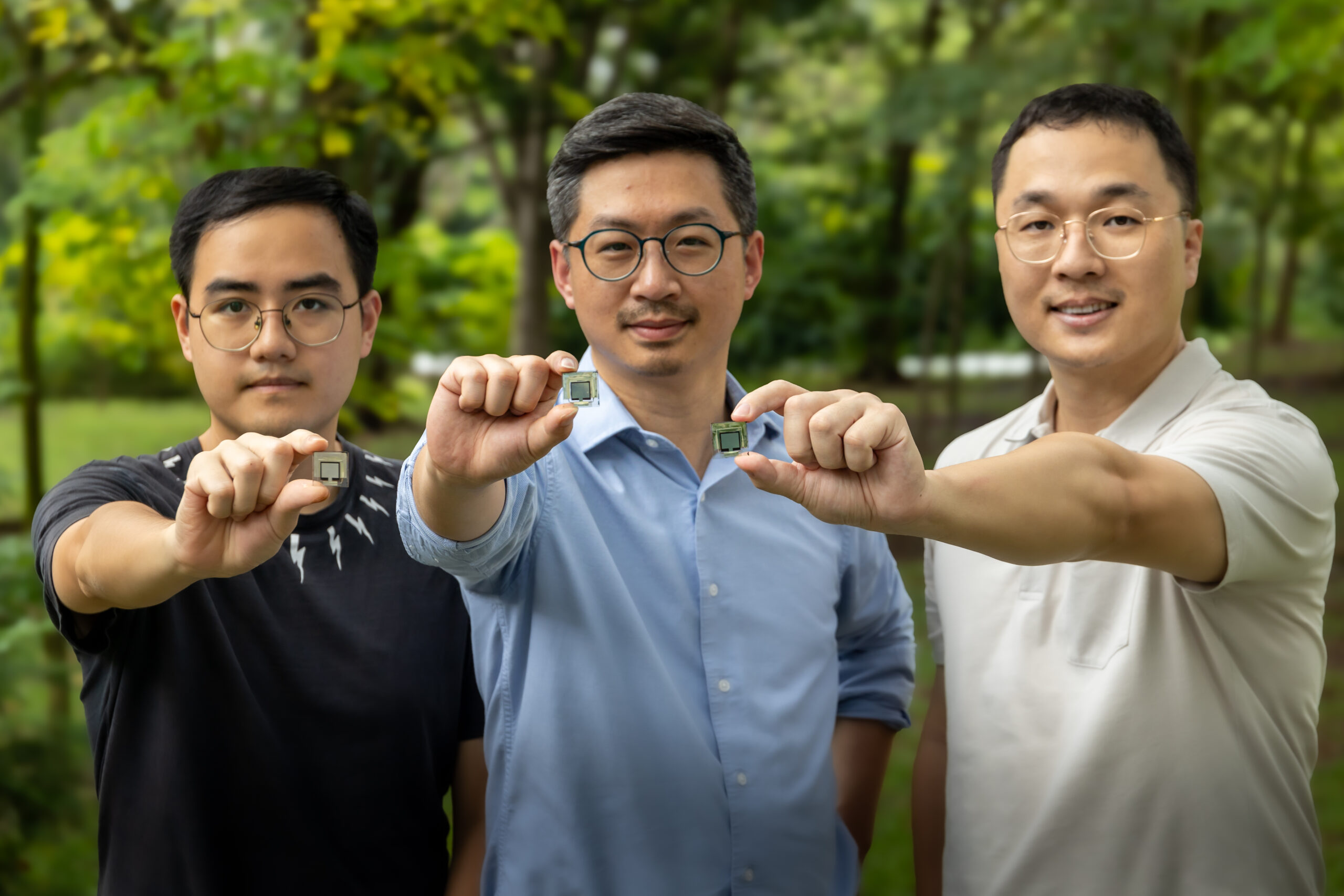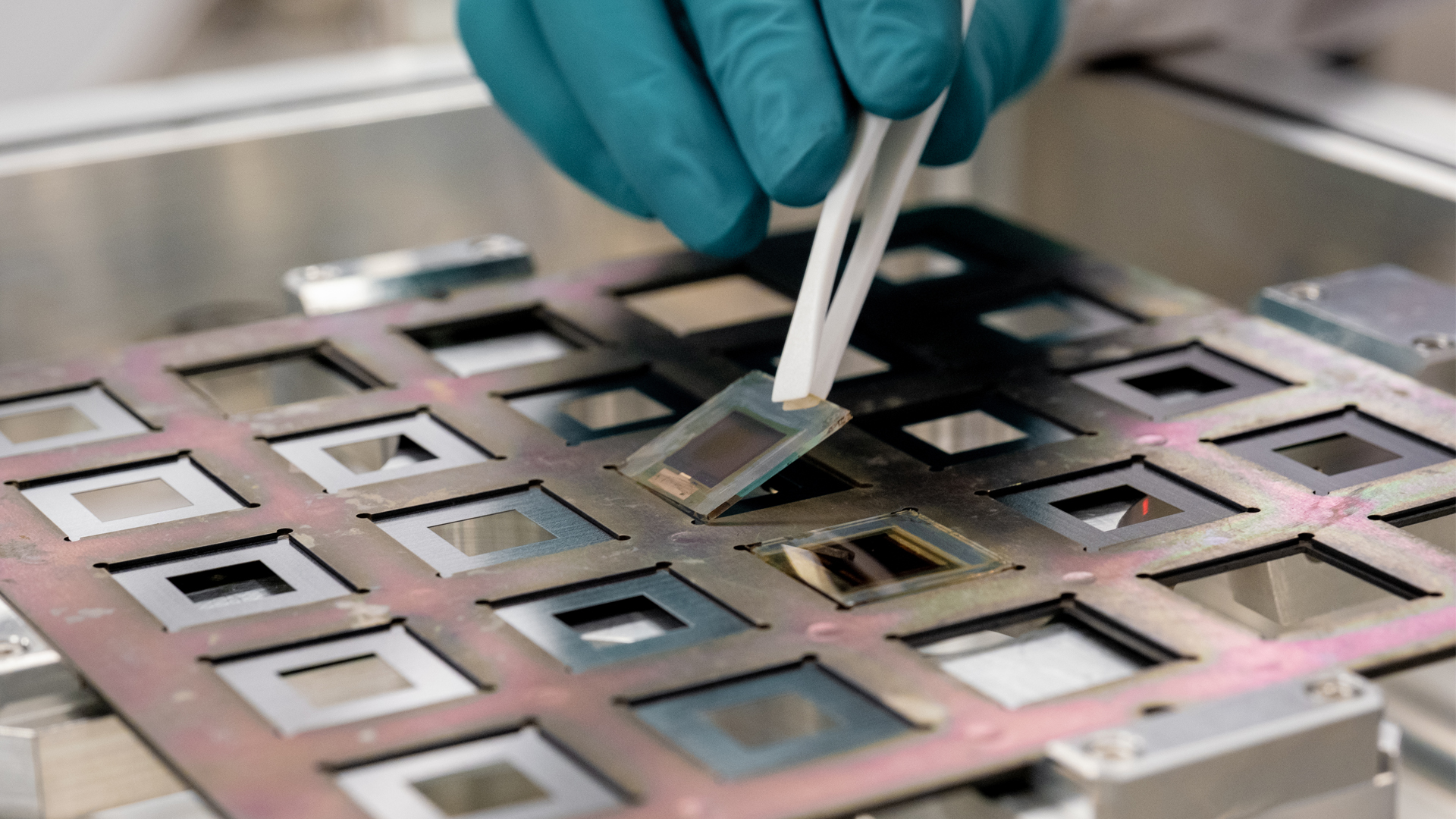
A breakthrough discovery in next-generation solar cell technology could help open the way to lighter, more flexible and more efficient solar panels.
The discovery by a team of researchers at CDE led by Assistant Professor Hou Yi (Presidential Young Professor, Chemical and Biomolecular Engineering and Solar Energy Research Institute of Singapore (SERIS)) involves the development of a new interface material that significantly improves the efficiency of perovskite solar cells.
Perovskites are a family of crystalline compounds with an unusual and complex structure. They are widely seen as the likely basis for future solar cells, replacing or being used in conjunction with silicon-based cells, due to factors such as greater flexibility, lighter weight, easier manufacturing processes, and – potentially – lower cost solar energy systems.
“Traditional silicon-based solar cells of the kind that we see on rooftops around the world, are a mature single-junction solar cell technology,” said Asst Prof Hou, who is head of the Perovskite-based Multijunction Solar Cell Group at SERIS, a university-level research institute hosted at CDE. “By stacking perovskite on top of silicon cells in a tandem cell configuration, the efficiency of the solar cell can be significantly enhanced.”
Stable interface
Asst Prof Hou added: “However, one of the big challenges in making these new perovskite cells work well and ready for market has been a loss of energy between the multiple layers of the cell and their interfaces. Our development of a new interface using a material called antimony doped tin oxides (ATOx) creates a chemically stable interface between the cell layers that's more uniform, conducts electricity better, and is more transparent, all of which reduces energy loss and improves the cell’s efficiency.”
The team’s findings were published recently in the journal Nature Energy.

In their paper Asst Prof Hou, along with team members Dr. Li Jia and PhD student Liang Haoming, report that with the ATOx interface they achieved a new record-high efficiency for perovskite cells, reaching up to 25.7 per cent in smaller cells and 24.6 per cent in cells with a 1 cm² area.
Research advances
Worldwide interest in the application of perovskites to solar energy generation has seen rapid advances in research, with discoveries quickly driving up efficiency levels from 3.8 per cent just a decade ago.
The latest discovery by Asst Prof Hou’s team takes perovskite cells very close to the efficiency levels seen in traditional silicon-based cells. Furthermore, the researchers say they are optimistic that with further refinement there is plenty of room to take the efficiency levels even higher.
In solar cells, efficiency is measured by how much of the sunlight that hits the cell is converted into electricity.
“The impact of the ATOx interface represents a significant advancement in making perovskite solar cells larger and more efficient,” said Asst Prof Hou.
“This takes their eventual practical use and commercialisation several steps closer. Going forward, in the next steps of our research we'll be exploring novel approaches to combine both high efficiency and stability in perovskite solar modules.”
Asst Prof Hou said that whilst differences in cell efficiency of single percentage points or less may not sound particularly significant, the vast scale of the global solar energy market means such differences can translate into substantial economic returns.

|
What are perovskites? Perovskites are a group of materials that share a similar crystal structure. They are named after the mineral perovskite, which was first discovered in the Ural Mountains of Russia in the 1830s. The distinctive three-part crystal configuration of perovskites gives them a range of interesting properties including high light absorption efficiency and ease of fabrication. Researchers have also discovered that it is possible to tune or adjust their optical and electronic properties. This makes perovskites useful in a variety of applications, such as superconductors, catalysts, as well as solar cells. |
Flexible and lightweight
A key benefit of perovskite cells is that they can be formed into extremely flexible and lightweight thin film panels, rather than the rigid and heavy panels that are associated with traditional silicon solar cells.
This means that perovskite cells could potentially be used in many different locations and applications, such as being integrated into the roofs of vehicles, or for use in future IoT devices.
Some studies are also looking at the possibility of incorporating thin film solar panels into building windows, in a method that would be easy to apply and open up huge potential for renewable energy generation.
Researchers are also looking at the benefits of combined - or “stacked” – solar cells using perovskite and silicon, which they say offers another route to improved solar cell efficiency.
“Right now in lab conditions, these tandem cells can deliver around 34 per cent efficiency, but in theory they could go as high as 45 per cent,” said Asst Prof Hou.





